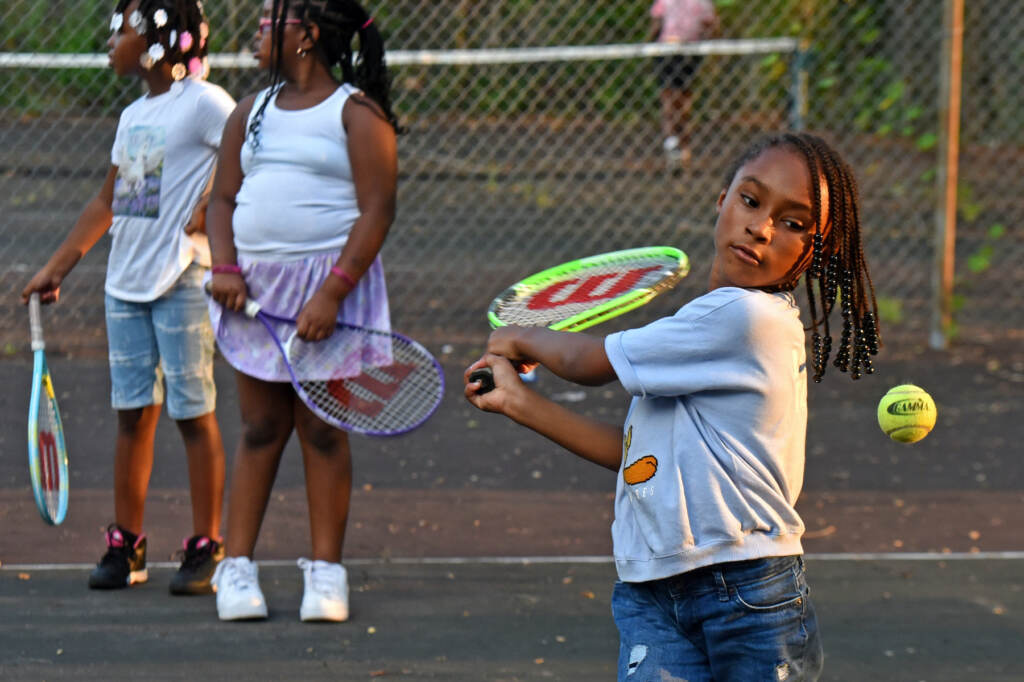The backhand is a shot where the back of the hand precedes the palm when swinging the racket.
Except in the phrase backhand volley, the term refers to a groundstroke (where the ball has bounced before it is struck). It contrasts with the forehand stroke, where the palm precedes the back of the hand.
The backhand is usually performed from the baseline or as an approach shot. For a right-handed player, a backhand begins with the racquet on the left side of the body, continues across the body as contact is made with the ball, and ends on the right side of the body, with the racquet over the right shoulder. The backhand can be a one-handed or two-handed stroke.
Due to the fact that the player’s dominant hand “pulls” into the shot, the backhand generally lacks the power and consistency of the forehand, and is usually considered more difficult to master. However, the two-handed backhand provides more stability and power for the shot, and is increasingly used in the modern game. Beginner and club-level players often have difficulty hitting a backhand, and junior players may have trouble making the shot if they are not strong enough to hit it. Many advanced players still have a significantly better forehand than backhand, and many strategies in tennis aim to exploit this weakness.
Key things to keep in mind when hitting a backhand:
-
Making contact with the ball:
Try to make contact with the ball when it is not directly in front of you. If you are right-handed, you should make contact a little off to your left side. The ball should be a little bit in front of you. You should be in a similar position as you would be when turning a doorknob.
-
Racquet-face control:
Beginners often struggle with racquet-face control and then lose control of the ball. It is very important to be mindful of how you hold the racquet and how that changes the directions the strings face because wherever your racquet face is pointing the moment that you make contact with the ball, that is where the ball is going to go. When you are just starting out, the goal should be to get the ball in play. As you get a little better, try to get it in but in the direction you are aiming for. So focus on controlling your racquet face and where it is pointing the moment you make contact with the ball.
-
Grip:
People can hold a racquet in many ways. In terms of the backhand, this includes hitting a two-handed backhand or a one-handed backhand. And while the two-handed backhand – where the dominant hand is at the bottom of the handle, with the non-dominant hand on top – is more common in today’s game, the most important thing is to use the grip you are most comfortable with and which gives you the most control.
Ultimately, the way you hold the grip translates to how the racquet face is pointing, so it really doesn’t matter which grip you use as long as you are able to control the racquet face. In terms of holding on to a racquet, it’s important that you aren’t trying to choke the life out of it. In terms of a scale from 1 to 10, if 10 is the absolute tightest you can grip the racquet, you want your grip to be at about a 3
-
Swing:
The harder you swing, the farther the ball is going to go. The most important thing is to be able to keep the ball on the court when you are a beginner, so keeping your backhand swing at a level that you’re able to keep the ball on the court is your No. 1 priority.
-
Footwork:
In general, try to be as light on your feet as possible. It shouldn’t sound like a herd of horses on the court when you’re playing


Add Comment